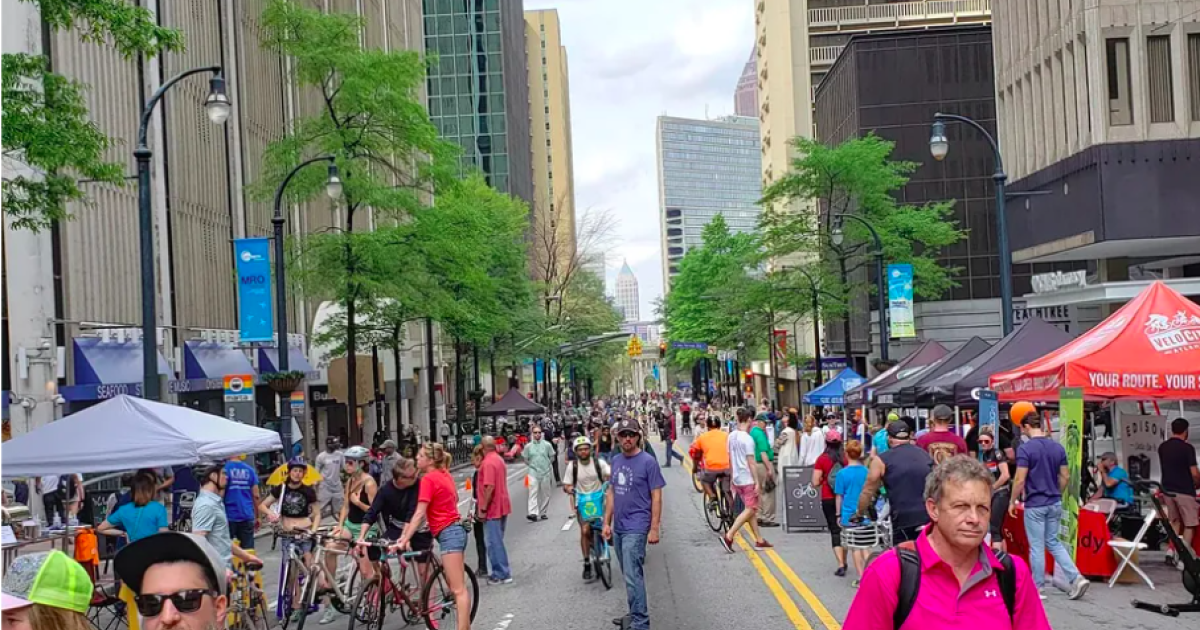- cross-posted to:
- atlanta
- cross-posted to:
- atlanta
It’s official: Atlanta Streets Alive is finally coming back Josh Green Wed, 07/19/2023 - 10:30 Believe it or not, September will mark four years since Atlanta hosted its last large-scale, open-streets program. That unanticipated finale drew an estimated 40,000 people to a route that swooped through Southwest Atlanta, connecting seven neighborhoods between Summerhill and Westview.
By all indications, the cherished tradition that was Atlanta Streets Alive isn’t finished. Instead, it’s about to awaken from a long, pandemic-induced hibernation.
To help prepare, the City of Atlanta has scheduled an online information session Tuesday to outline how the city’s signature open-streets event expects to return this fall after its four-year hiatus.
City officials are seeking input from Atlanta residents, and they plan to relay info on how regular Atlantans can get involved to help bring Streets Alive back. Registration for the 6 p.m. webinar can be found here.
Atlanta City Councilmember Amir Farokhi, who helped secure $200,000 in the city’s budget this year to fund Streets Alive’s return, said a specific date for the first event has yet to be determined, beyond sometime this fall.
Approved funding will cover the cost of between five and 10 car-free events. The Atlanta Department of Transportation is in the process of determining what each one will cost, according to Farokhi.
“It’s not clear yet where the routes will be,” Farokhi tells Urbanize Atlanta. “I was told at least a couple on Peachtree [Street] and then some in other parts of the city.”
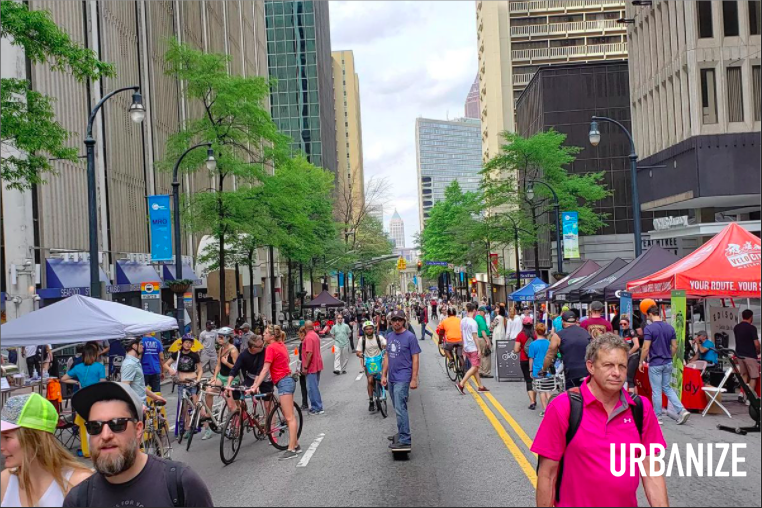 An Atlanta Streets Alive takeover of Peachtree Street downtown in 2019. Josh Green/Urbanize Atlanta
An Atlanta Streets Alive takeover of Peachtree Street downtown in 2019. Josh Green/Urbanize Atlanta
The Peachtree Street route, usually stretching from South Downtown to near the High Museum, was among the most attended and frequently staged of the events over the years. Crowds often topped 100,000, as estimated by volunteer counters.
Atlanta Bicycle Coalition (now Propel ATL) originated Streets Alive. Inspired by ciclovíaevents in Bogotá, Colombia and other cities, the Streets Alive phenomenon began meagerly one day in 2010 when a stretch of Edgewood Avenue opened to bicyclists, skaters, walkers, and anyone else not driving a car.
Over the next decade, the events drew increasingly more massive crowds—some 1.7 million people total—to temporarily open streets spanning from DeKalb Avenue at the Decatur line to West End and Collier Hills. It happened three or four times per year, for a few hours on Sundays.
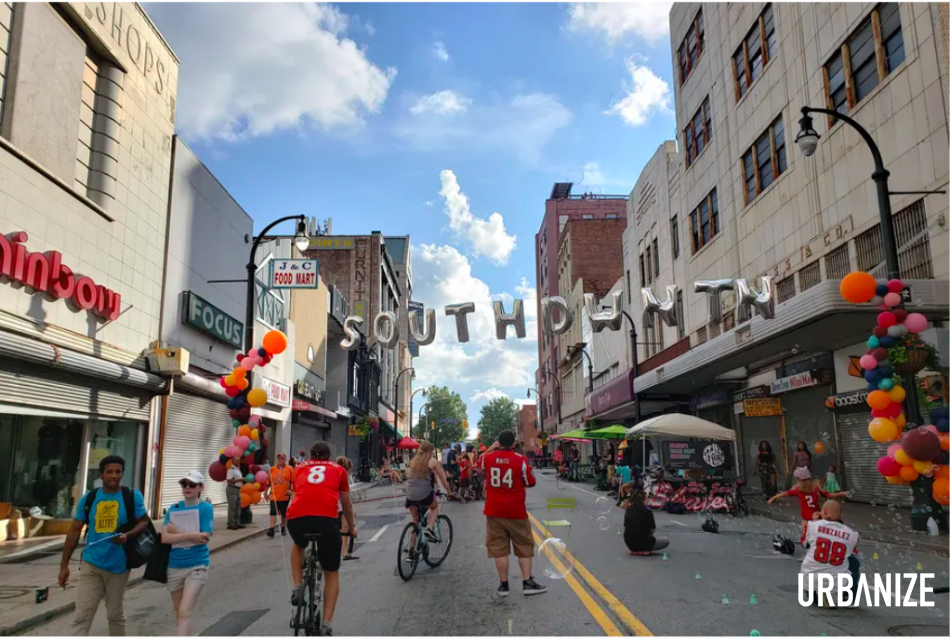 A festive Streets Alive scene in South Downtown in October 2018. Josh Green/Urbanize Atlanta
A festive Streets Alive scene in South Downtown in October 2018. Josh Green/Urbanize Atlanta
A previous ordinance that emerged in 2021—as supported by the bicycle coalition and six cosigners on the city council—proposed opening up Peachtree to Streets Alive every Sunday. But those efforts later dissolved.
Over the course of a decade, organizers say Streets Alive staged 29 events and covered some 83 miles of city streets. Where should it head next, in the cooler months ahead?
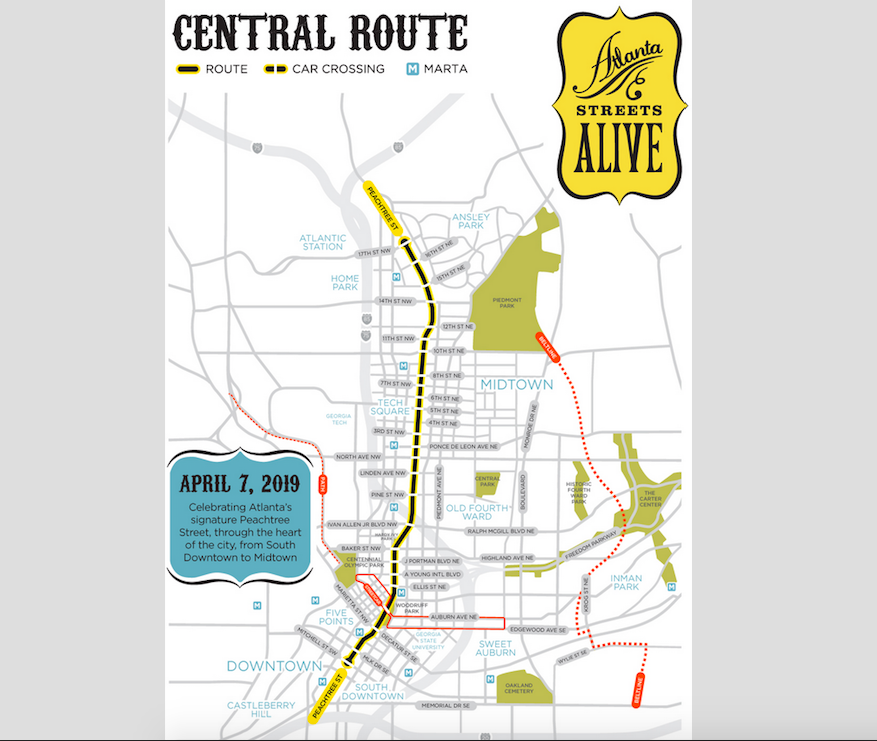 What a three-mile centralized Atlanta Streets Alive route looked like when the events were a more common occurrence four years ago. Propel ATL
What a three-mile centralized Atlanta Streets Alive route looked like when the events were a more common occurrence four years ago. Propel ATL
…
Follow us on social media:
• Letter to Editor: Why Atlanta Streets Alive is crucial for a vibrant city (Urbanize Atlanta)
Tags
Atlanta Streets Alive Propel ATL Amir Farokhi Peachtree Street Downtown Atlanta Bicycle Coalition Atlanta Festivals Atlanta Traditions
Images
 A festive Streets Alive scene in South Downtown in October 2018. Josh Green/Urbanize Atlanta
A festive Streets Alive scene in South Downtown in October 2018. Josh Green/Urbanize Atlanta
 An Atlanta Streets Alive takeover of Peachtree Street downtown in 2019. Josh Green/Urbanize Atlanta
An Atlanta Streets Alive takeover of Peachtree Street downtown in 2019. Josh Green/Urbanize Atlanta
 In summer 2016, Streets Alive incorporated a much more dormant Georgia Avenue in Summerhill into its West End route. Josh Green/Urbanize Atlanta
In summer 2016, Streets Alive incorporated a much more dormant Georgia Avenue in Summerhill into its West End route. Josh Green/Urbanize Atlanta
 What a three-mile centralized Atlanta Streets Alive route looked like when the events were a more common occurrence four years ago. Propel ATL
What a three-mile centralized Atlanta Streets Alive route looked like when the events were a more common occurrence four years ago. Propel ATL
Subtitle The city’s signature open-streets program has been dormant for four long years
Neighborhood Citywide
Background Image
Image
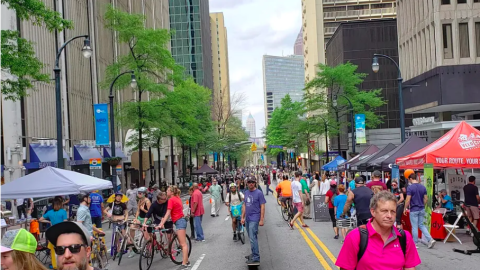
Before/After Images
Sponsored Post Off
